Could bombillas (decorated metal straws for drinking yerba mate) cause undiagnosed heavy metal poisoning in users?
Are yerba mate bombillas (straws) toxic?
Published: February 29, 2020
Photographic contributions by Avi Benjamin Rubin
For those new to this website:
Tamara Rubin is a multiple-Federal-award-winning independent advocate for childhood Lead-poisoning prevention and consumer goods safety, and a documentary filmmaker. She is also a mother of Lead-poisoned children (two of her sons were acutely Lead-poisoned in 2005). Since 2009, Tamara has been using XRF technology (a scientific method used by the U.S. Consumer Product Safety Commission) to test consumer goods for toxicants (specifically heavy metals — including Lead, Cadmium, Mercury, Antimony, and Arsenic). All test results reported on this website are science-based, accurate, and replicable. Items are tested multiple times to confirm the test results for each component tested. Tamara’s work was featured in Consumer Reports Magazine in February of 2023 (March 2023 print edition).
Background
What is a bombilla?
Until recently, I had no idea what a bombilla was. I was introduced to them when I had the occasion to test a couple of Argentinian bombilla straws on a recent trip. It was only then I learned about their intended use — as a traditional straw used to drink a specific very hot (and acidic) beverage: yerba mate. I was alarmed by the XRF test results, which showed very high levels of Lead and Antimony (as well as other concerning metals). Potential heavy metals poisoning with the regular (“normal/ “as intended”) use of these — often ornately-decorated — metal straws seems like a very real risk.
Prior to testing these items, I was not familiar with this product, its use, nor its popularity. In researching for this article over the past couple of days, I really “went down the rabbit hole” of learning everything I could about bombilla (yerba mate straws), their origins, their history, their evolution, their usage and the materials typically used to make them (see above). Needless to say, as an advocate for Lead poisoning prevention and safety in consumer goods manufacturing, I was astounded by (and quite concerned about) the implications of what I learned. Below, I will share with you the results of the XRF testing for the two straws pictured here, and then (below the full test results) I will discuss the potential health implications.
Mystery source of illnesses cluster caused by drinking yerba mate
In my inquiry, I read that medical researchers have been puzzled by the fact that drinking hot yerba mate is associated with a higher risk of cancer than is drinking cooler yerba mate (see Mayo Clinic quote below). The types of cancer linked to drinking hot (or very hot) yerba mate include cancers of the mouth, esophagus, and lungs.
WebMD notes (see second quote below) that regular heavy ongoing consumption of Yerba Mate also appears to be causal of the following symptomatic expressions: “headache, anxiety, agitation, ringing in the ears, and irregular heartbeats,” (symptoms also consistent with heavy metal poisoning).
Sources agree that “more investigation needs to be done into the safety and side effects of yerba mate” — yet no one (from what I can see after several days of research online) is looking into these symptoms potentially being caused by heavy metal poisoning — due to using heavy metals-containing bombillas when drinking hot (or “very hot”) yerba mate.
per Mayo Clinic website:
per WebMD website:
Possible cause for alarm, and a recommendation:
Based on the bombilla (straw) testing I did (details reported below), if you regularly drink yerba mate in a traditional gourd with a metal bombilla, and have also been experiencing “headaches, anxiety, agitation, ringing in the ears, and/or irregular heartbeat,” you may want to ask your doctor or other health practitioner about getting yourself tested for possible heavy metal poisoning.
I believe it would be prudent to ask your doctor to test your hair, blood, or urine for unsafe/ unexpected levels of Lead, Antimony, Nickel, and Copper. I am not a doctor — but, based on my considerable professional experience testing consumer goods, and working with hundreds (if not thousands) of Lead-poisoning victims over the course of the last 10+ years, I would recommend getting a full metals panel if you are a regular user of one of these straws and if that sort of testing is available to you.
XRF testing of two specific bombillas
(yerba mate straws)
Tests are done on each component of each straw for a minimum of 60 seconds each. All tests are done multiple times to confirm the results. Results are science-based, accurate, and replicable. Testing is done using an XRF instrument (an X-Ray Fluorescence Spectrometer), which is the same instrument used by the United States Consumer Product Safety Commission to screen consumer goods for the presence of potentially toxic heavy metals.
Continue reading below the image!
#1) Below are full XRF test results for the Bombilla (Yerba Mate Straw) pictured above with the small floral decorative element.
Continue reading below the image!
1.a.) Filter (above image):
- Lead (Pb): 6,105 +/- 588 ppm
- Tin (Sn): 40,700 +/- 700 ppm
- Zinc (Zn): 128,200 +/- 2,700 ppm
- Copper (Cu): 409,500 +/- 3,100 ppm
- Nickel (Ni): 411,200 +/- 3,000 ppm
- Iron (Fe): 856 +/- 325 ppm
- Titanium (Ti): 1,452 +/- 264 ppm
- Silver (Ag): 31 +/- 62 ppm
Note: given the small size and odd shape of the removable filter, consistent readings were unusually difficult to achieve — the readings fell between the range of 3,000 ppm and 12,000 ppm for Lead. To get a more “true” (precise) total Lead content reading, the component would need to be made flat (through melting or high-pressure compression). Based on my experience, I would anticipate that subsequent reading to be in the 20,000 to 40,000 ppm range after such flattening (when it would then easily be able to span the entire “testing window” of an XRF instrument).
Continue reading below the image!
1.b.) Threaded area where filter screws on (above image):
- Lead (Pb): 17,000 +/- 1,000 ppm
- Antimony (Sb): 391 +/- 133 ppm
- Tin (Sn): 21,500 +/- 600 ppm
- Zinc (Zn): 313,700 +/- 3,000 ppm
- Copper (Cu): 589,600 +/- 3,600 ppm
- Nickel (Ni): 53,200 +/- 1,200 ppm
- Iron (Fe): 2,650 +/- 394 ppm
- Titanium (Ti): 705 +/- 184 ppm
- Silver (Ag): 132 +/- 60 ppm
1.c.) Main functional tube of straw
- Tin (Sn): 37,600 +/ 600 ppm
- Bromine (Br): 4,118 +/- 190 ppm
- Zinc (Zn): 8,433 +/- 868 ppm
- Copper (Cu): 399,800 +/- 2,400 ppm
- Nickel (Ni): 543,900 +/- 2,500 ppm
- Iron (Fe): 454 +/- 231 ppm
- Titanium (Ti): 1,657 +/- 305 ppm
- Silver (Ag): 174 +/- 57 ppm
- Platinum (Pt): 968 +/- 638 ppm
- Cobalt (Co): 348 +/- 232 ppm
Continue reading below the image!
1.d.) Decorative Elements (flowers — above image)
- Lead (Pb): 65,200 +/- 2,000 ppm
- Tin (Sn): 57,100 +/- 1,100 ppm
- Zinc (Zn): 45,200 +/- 2,200 ppm
- Copper (Cu): 339,200 +/- 3,700 ppm
- Nickel (Ni): 461,500 +/- 3,900 ppm
- Titanium (Ti): 1,700 +/- 300 ppm
Continue reading below the image!
#2) Below are full XRF test results for the Bombilla (Yerba Mate Straw) pictured above (with the square fleur-de-lys decorative element):
2.a.) Filter
- Lead (Pb): 10,200 +/- 900 ppm
- Tin (Sn): 32,700 +/- 800 ppm
- Bismuth (Bi): 387 +/- 242 ppm
- Zinc (Zn): 239,700 +/- 3,300 ppm
- Copper (Cu): 523,100 +/- 3,900 ppm
- Nickel (Ni): 189,500 +/- 2,400 ppm
- Iron (Fe): 1,313 +/- 389 ppm
- Titanium (Ti): 1,257 +/- 260 ppm
2.b.) Main functional tube of straw
- Tin (Sn): 38,200 +/ 600 ppm
- Bromine (Br): 8990 +/- 270 ppm
- Zinc (Zn): 73,900 +/- 1,700 ppm
- Copper (Cu): 433,900 +/- 2,400 ppm
- Nickel (Ni): 438,400 +/- 2,400 ppm
- Iron (Fe): 552 +/- 231 ppm
- Titanium (Ti): 2,478 +/- 383 ppm
- Nb: 1,776 +/- 181 ppm
Continue reading below the image!
2.c.) Decorative Elements (fleur-de-lys badge)
- Lead (Pb): 461,900 +/- 3,500 ppm
- Antimony (Sb): 80,700 +/- 1,500 ppm
- Tin (Sn): 52,700 +/- 1,200 ppm
- Selenium (Se): 1,847 +/- 445 ppm
- Gold (Au): 3,548 +/- 725 ppm
- Copper (Cu): 128,700 +/- 2,600 ppm
- Nickel (Ni): 259,100 +/- 3,500 ppm
- Iron (Fe): 1,338 +/- 803 ppm
- Titanium (Ti): 2,222 +/- 414 ppm
- Zirconium (Zr): 1,865 +/- 237 ppm
- Cobalt (Co): 1,191 +/- 627 ppm
Where were the toxicants found?
- In most components: Toxic heavy metals were found both in the external decorative elements of the straws, and in the food-contact surfaces.
- In decorative elements: The decorative elements applied to the exterior (non-food-contact) surfaces of the straw tested positive for the highest levels of toxic heavy metals.
- In the removable filters: Of perhaps the greatest concern (even to a level of “alarm”): the part that you directly submerge in the hot beverage (the removable metal “filter” component that is supposed to filter out the impurities of the yerba mate as you drink it) is made of a high-Lead-content metal (possibly qualifying as Leaded brass, and per the above comment in the testing section, possibly as high as the 20,000 to 40,000 ppm range). The filters have significantly lower Lead levels than the decorative elements, but they are high enough to potentially cause harm given the functionality of the component.
- In the filter threads: Finally, the threaded section that the filter attaches to also appears to be made of Leaded brass.
The only analogy I can think of is if someone found the purest spring water (famous for its purported health benefits) and then proceeded to drink it through a Lead-pipe! While scientific study needs to be done, based on my years of experience, I am fairly certain that drinking very hot yerba mate though these Leaded “filters” is very likely causing at least some level of Lead contamination of the beverage. This is exacerbated by the fact that the high-lead filter part would actually normally sit submerged in the hot beverage continuously while you drink.
How much Lead is too much Lead?
I expect items like this are not at all regulated for toxicity in Argentina. The only relevant standard that can be applied (the only standard limiting total Lead content — as detectable with an XRF instrument- in consumer goods in the United States) is the standard for items manufactured as items intended for use by children. For these items only (items made and sold for kids today) Lead must be below 90 ppm in the paint, glaze, or coating, and below 100 ppm in the substrate of an item. Of course these straws are not made for children, but that does not make them any less toxic — especially with Lead levels in some components approaching 500,000 ppm! (That’s 50% Lead!)
Could using one of these bombillas really be poisoning me?
Based on my preliminary findings (details shown above) of high levels of multiple toxic heavy metals in two separate yerba mate bombilla straws (purchased in Argentina, pictured here on this article), heavy metal poisoning would certainly appear to be a possible explanation (a primary factor or a contributing factor) for both the “mysterious” chronic symptoms noted above (possibly incorrectly attributed to the beverage, not the hardware), as well as the associated cancers. Frankly, I am actually shocked — given the tradition behind (and the current popularity of) this drink, along with the purported health benefits of the beverage — that no scientific body appears to have made an effort to look into potential population-level heavy metal poisoning as a possible consequence of the use of these popular implements.
If you are a fluent Spanish speaker and could do some googling for potential studies written in Spanish, I would appreciate knowing more about what you find as well. I was only able to do a productive search in English. My searches in Spanish were limited by my fairly limited knowledge of the Spanish written language, but I did try!
Touching these straws is bad, too!
In addition to my concern for potential poisoning from ingestion of yerba mate that has been contaminated by passing through one of these toxic straws (and the attached Leaded-brass filters), I have concerns for potential poisoning of the user caused by merely handling (touching and possibly fidgeting with) these straws.
Regular fidgeting with an item like this (especially one like the one shown here with the fleur-de-lys, which is nearly 50% Lead on the decorative element) could possibly cause unsafe levels of Lead and Antimony to wear off on to the hands of the owner, toxicants which might then later be ingested (as could happen when eating an apple, french fries, burrito, or corn chips with your hands after fidgeting with the straw).
Can you buy straws like these today?
Yes, apparently it seems they are available everywhere! The straws pictured here are just two examples of metal Bombilla straws (purchased in Argentina by one of my readers). I understand from some of the research I have done (see the images below) that this common removable filter component (which is quite high in Lead) is an indicator that these are a newer style (not, for example, some vintage version of the product). There seem to be hundreds — if not thousands — of iterations of these straws available online, and I will work to test more examples to try to determine just how pervasive this particular, very disturbing, design/ supply chain specification is … From the seemingly endless product listings (featuring photos of similar-looking screw-on filters) that I have seen so far, I am not encouraged!
Continue reading below the images.
From the YerbaMatero.com website:
Below are several examples of Bombilla straws with screw on filters (similar to the ones tested above).
But Tamara, I thought yerba mate is good for you!
Ironically, yerba mate is widely considered to confer an array of purported health benefits — relieving fatigue, supporting weight loss, easing depression, treating headaches, and other conditions — however, research has shown that habitual (regular and heavy) use of yerba mate might cause some of the very conditions it is alleged to relieve.
My hypothesis (as stated above) is that it may not be the beverage itself causing the maladies that have been shown to bear a statistical association with its habitual use, but perhaps rather the use of toxic heavy metal-laden bombillas with normal/ regular (and heavy) consumption of yerba mate that may turn out to be the real culprit.
Even more shocking, these are known to contain Lead!
As you can see from the screenshot above (from YerbaMatero.com), it is known that these metal straws might contain Lead (and Copper and Nickel — Nickel as a primary component of stainless steel), yet the only warning I found is the one above suggesting folks “avoid ones made of iron or tin or coated with copper or nickel plating”(!); I could not find any online warning for potential harmful impacts of Lead or Antimony in metal bombillas!
Conclusion based on the XRF test results:
Toxic heavy metals found (at unsafe levels) in the two bombillas pictured here include both:
- Antimony: known to cause cancer in rats and respiratory issues in humans, and
- Lead: known for millennia to cause neurological disorders, and also — more recently — known to cause headaches, an increased risk of heart disease, and a compromised immune system (that could make an exposed person more prone to certain cancers), among a very long list of various other known health impacts.
Considering the specific use of the objects (daily use in the consumption of a very hot beverage, that is also fairly acidic), these straws also contain what may perhaps be potentially-concerning levels of two additional metals — specifically Nickel and Copper — which also have the potential to be harmful to humans in high doses.
What should we do about this?
- If at all possible, cease using any metal bombillas (as they may all be contaminated with one metal or another that is unsafe to use with the hot acidic beverage as intended).
- Revert to the traditional natural (and undecorated/unpainted/unstained) cane bombillas if you must drink your beverage using the traditional gourd and straw. (Sorry I don’t have a link for this, I have not found one online that I am confident is likely paint-free and stain-free.)
- If you are or have been regular/daily — or heavy — user of yerba mate using a metal bombilla, ask your doctor for a heavy metal test immediately.
- Consider drinking your yerba mate cool (or at least cool-er) — and without a bombilla.
- Bottled yerba mate from the store should not be a concern, unless you heat it and drink it in a traditional vessel with a bombilla.
- I am hopeful that with my readership base (I had more than 1,948,000 readers in over 200 countries in 2019 alone — including 192 readers in Argentina!) this information will get to the proper authorities in Argentina so a public health warning can be issued. (My readers help me in this work by sharing the information in my articles with their communities, local governments and manufacturers.)
As always, thank you for reading and sharing this work. Just sharing this article (in particular) may actually help protect someone you know personally from potential heavy metal poisoning.
For updates on this matter (as they come up!) please subscribe to my email list (it’s free!).
Please let me know if you have any questions. I will do my best to answer any questions as they come in — but with recent traffic on the website, I have not been able to answer all questions in real time.
Tamara Rubin
#LeadSafeMama
For additional images continue reading.
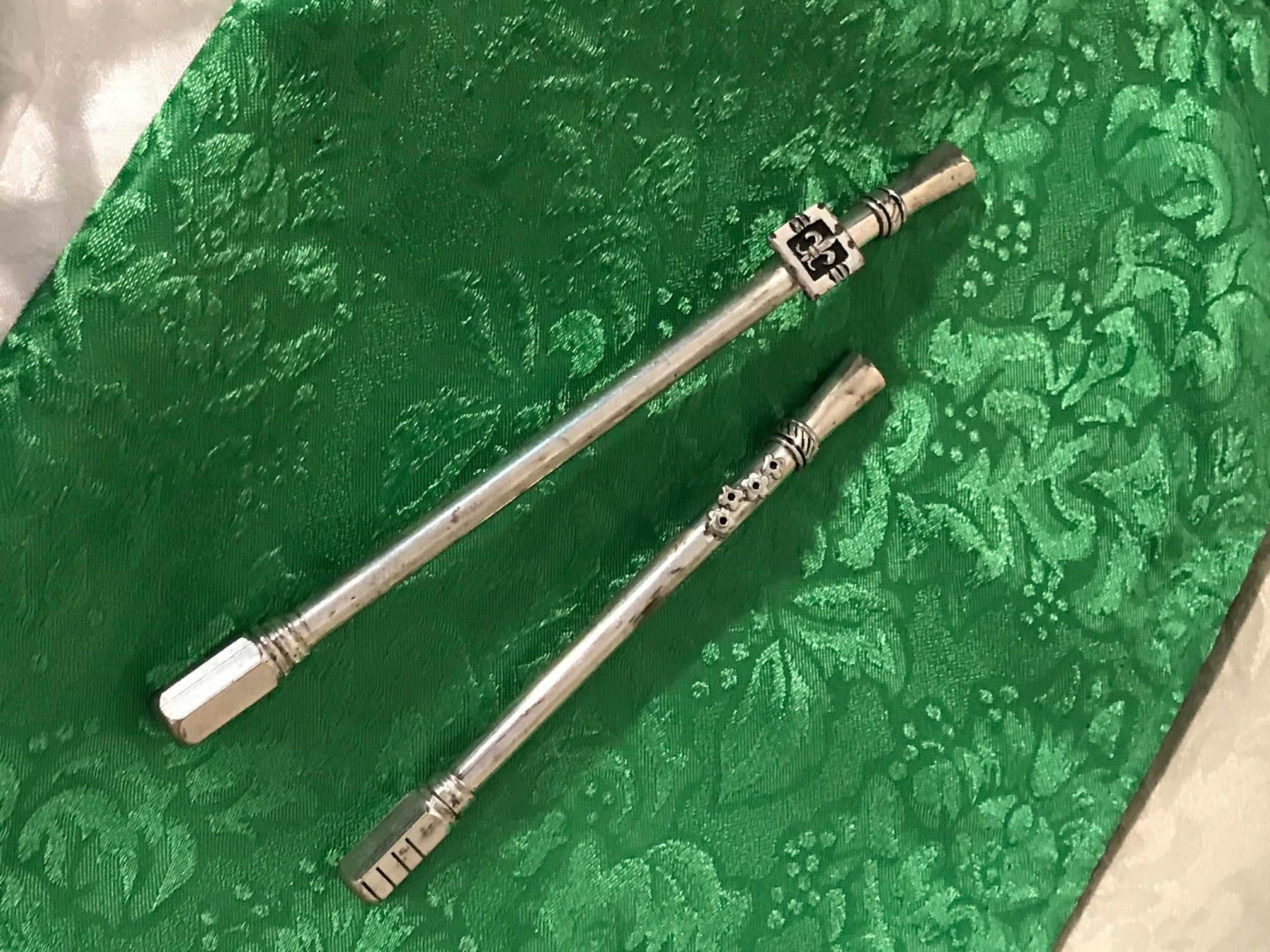
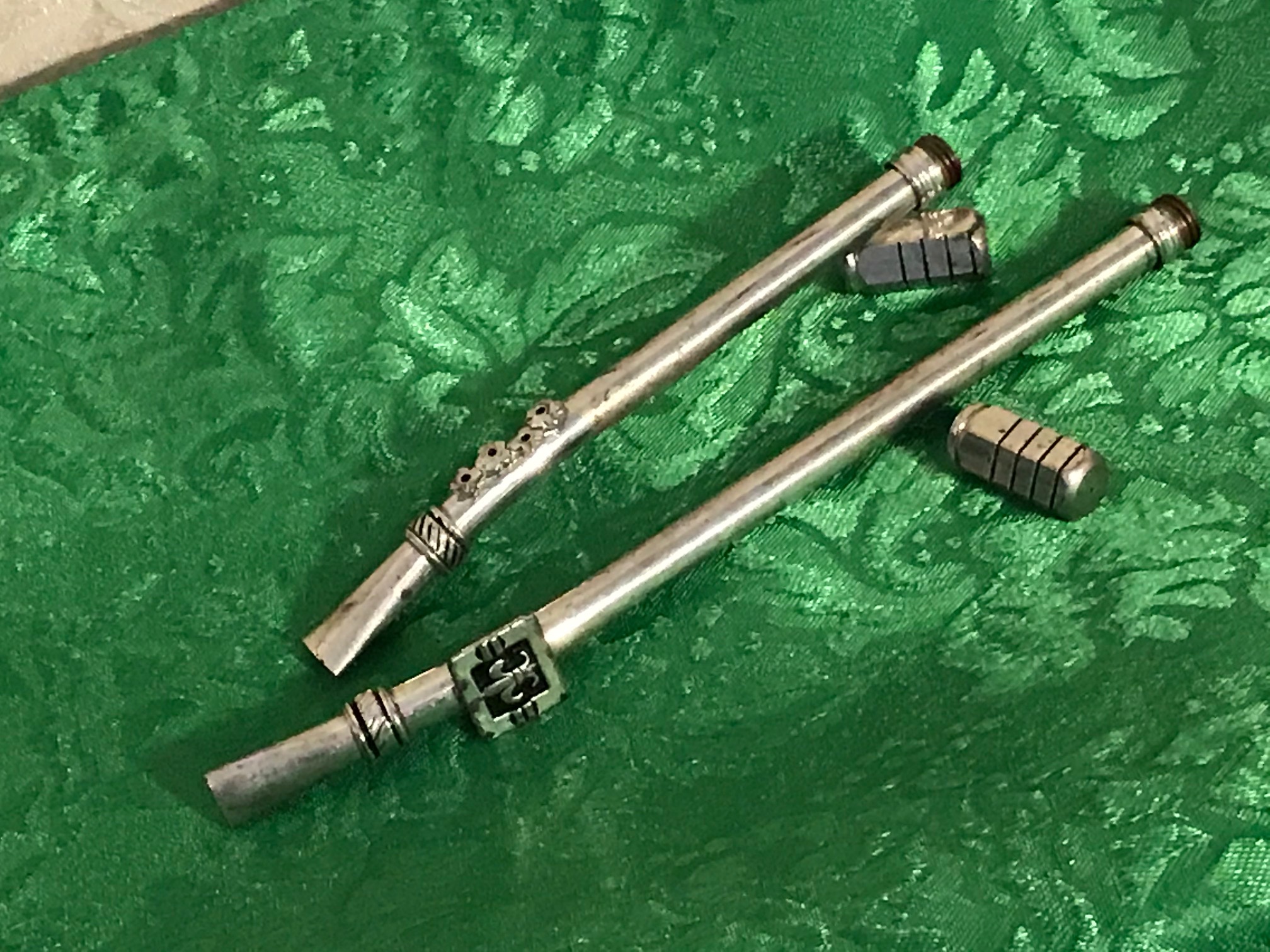
Not only are the straws potentially concerning – but the gourds (like the one pictured below) might also be high in heavy metals. The color of the brass in the one pictured directly below makes me concerned that this might be Leaded brass.
~ End ~
Never Miss an Important Article Again!
Join our Email List









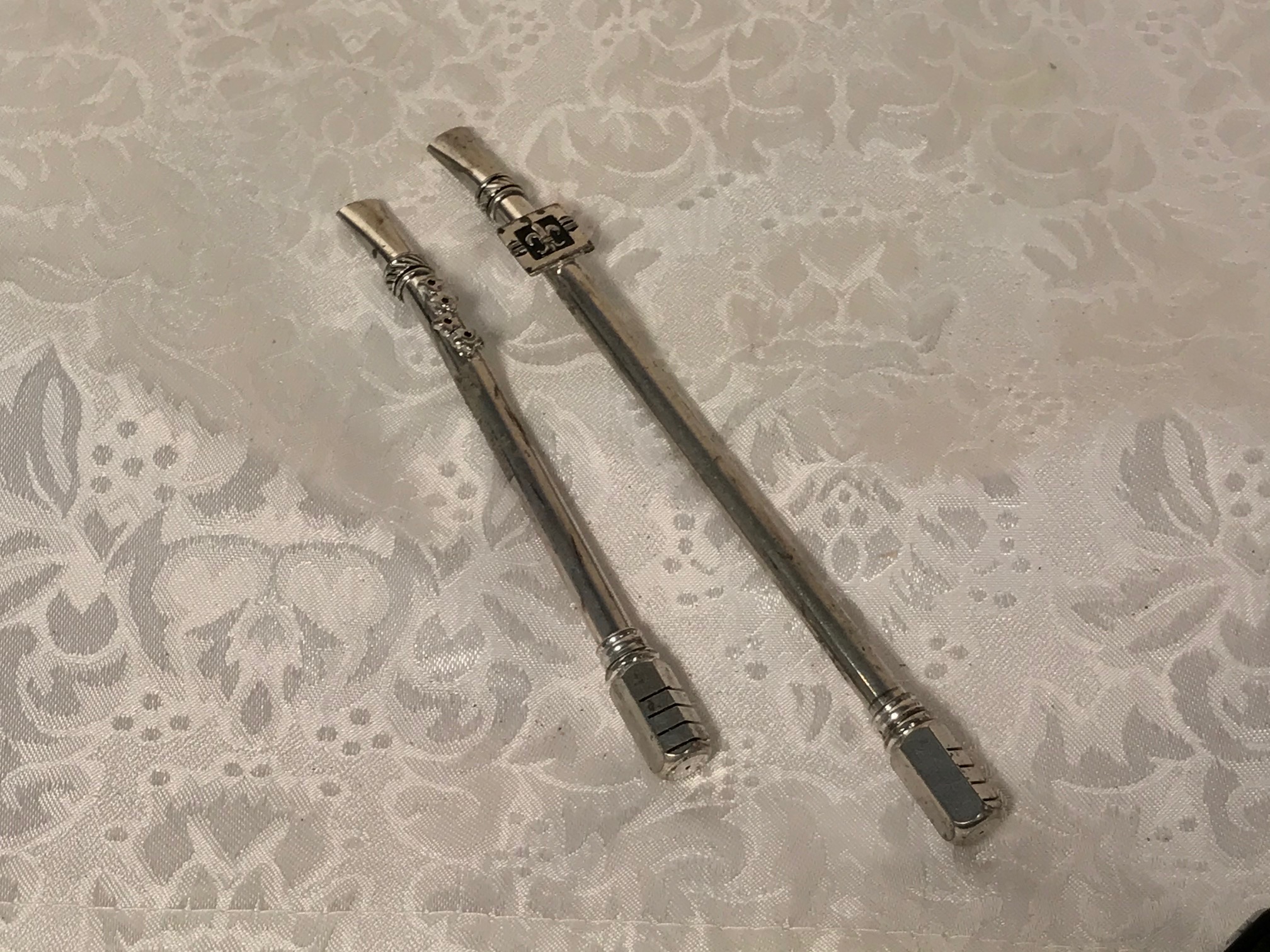

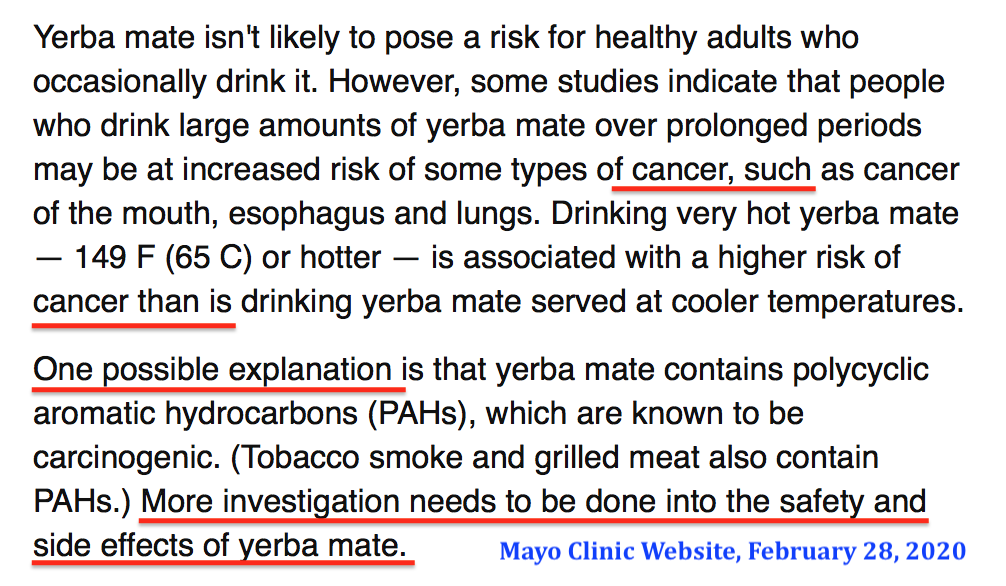

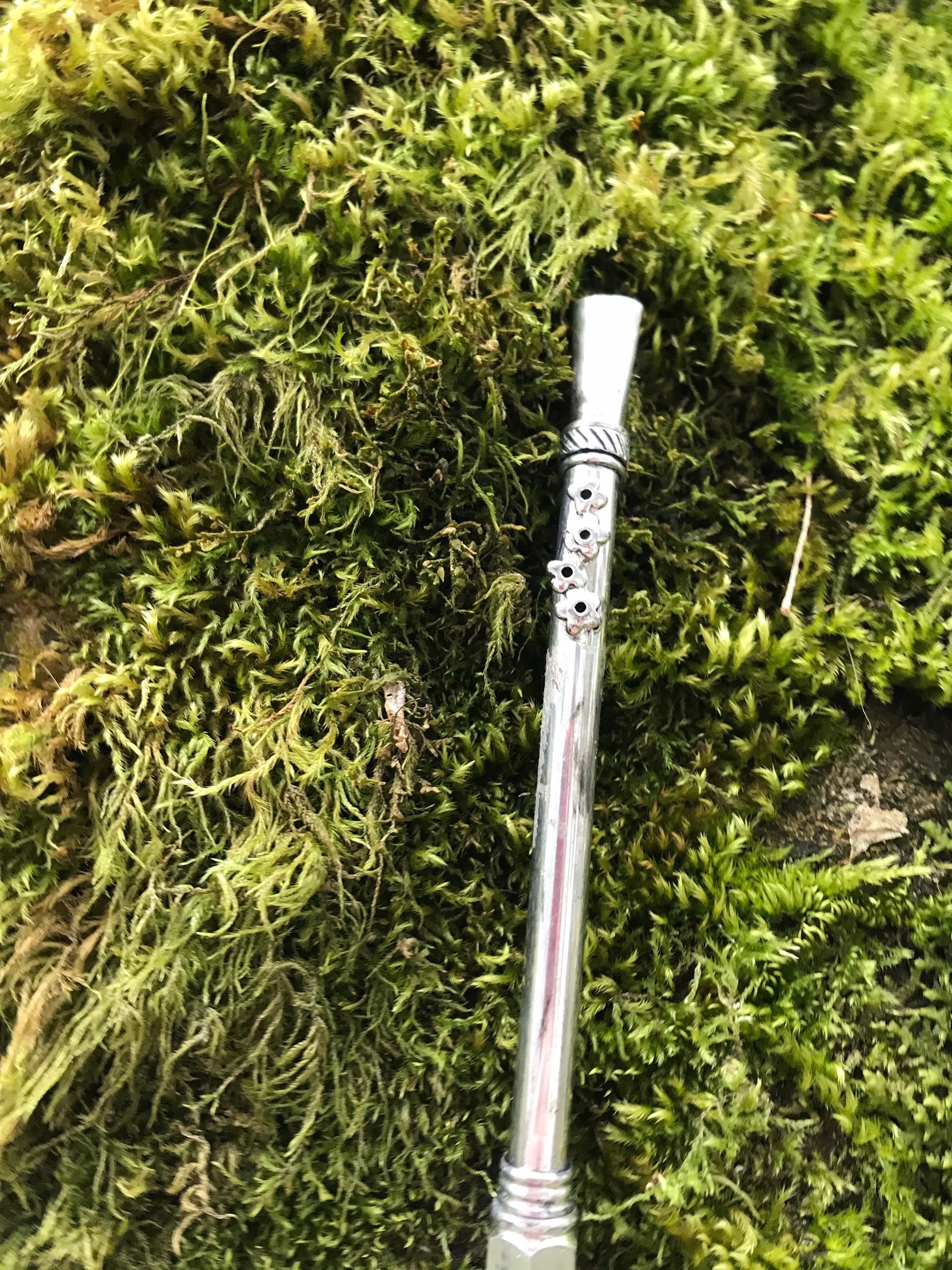
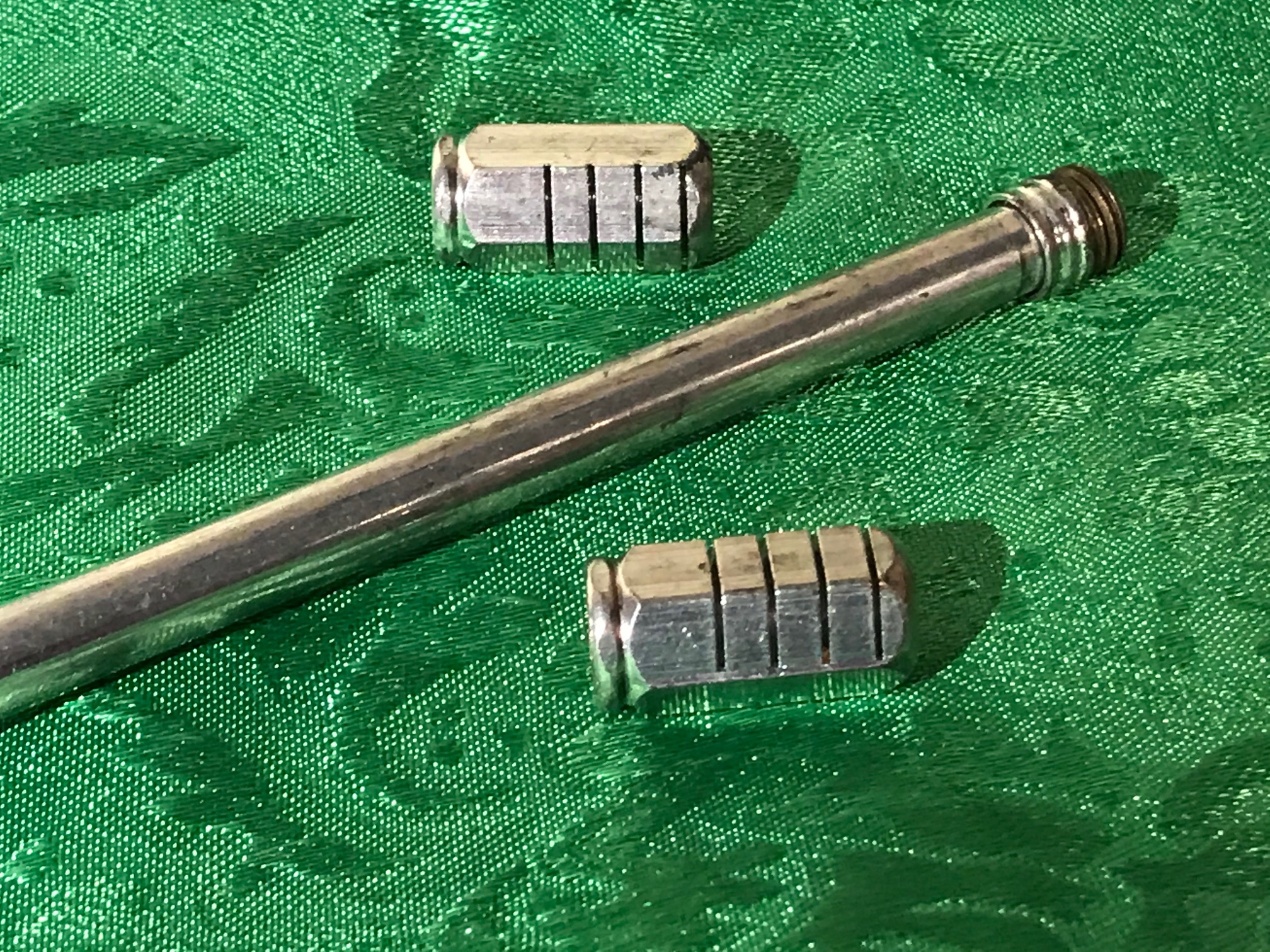
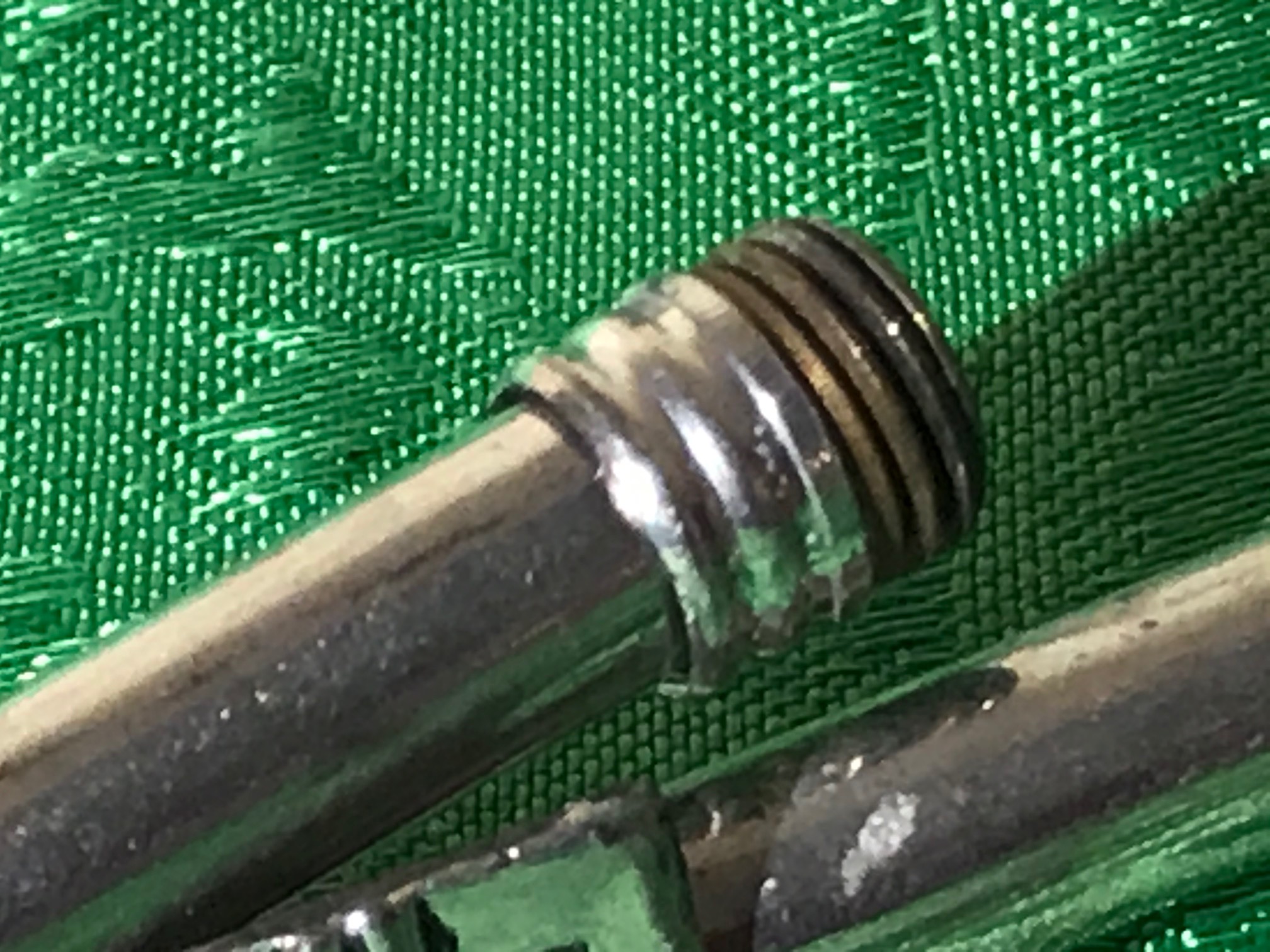
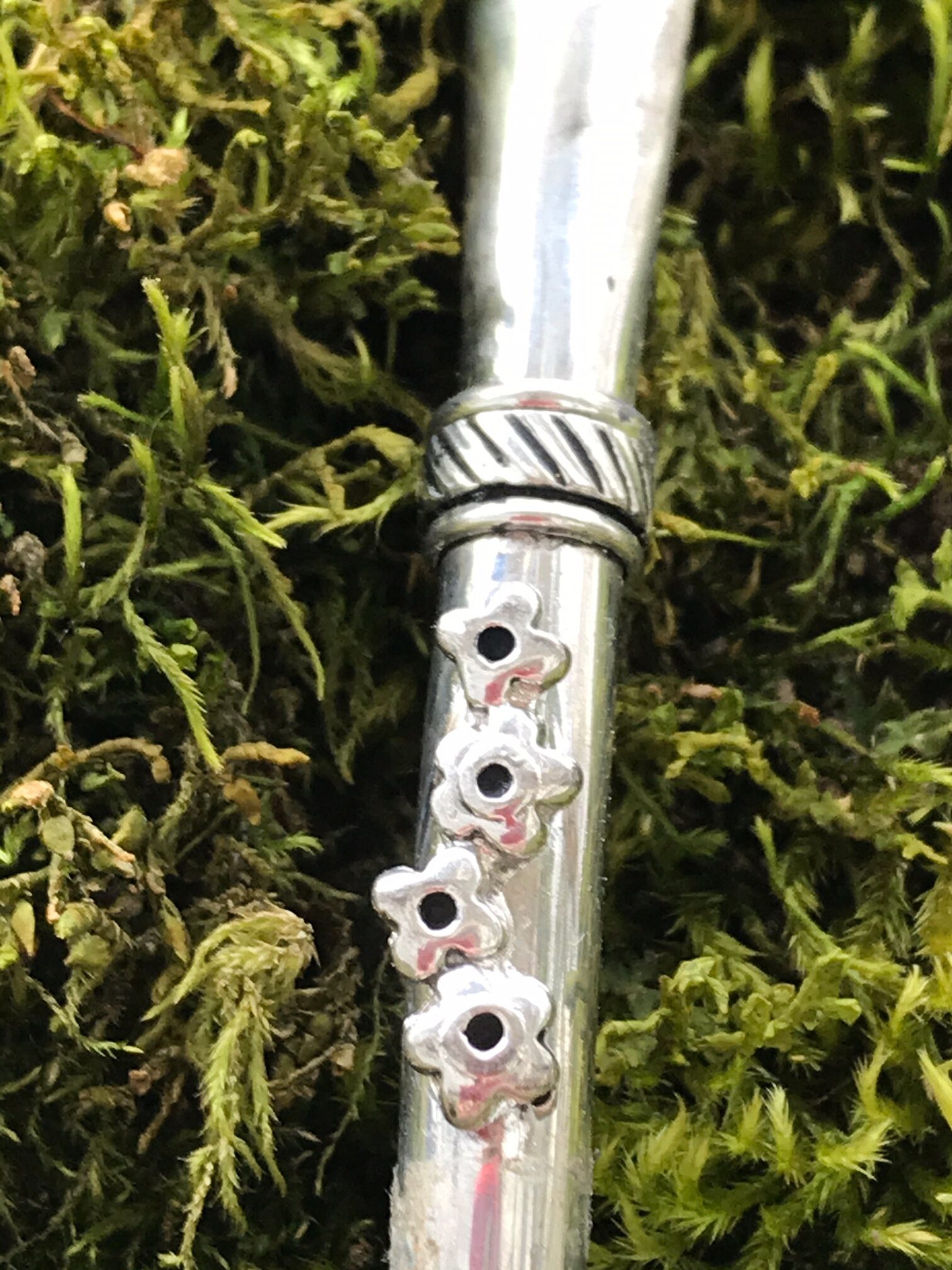
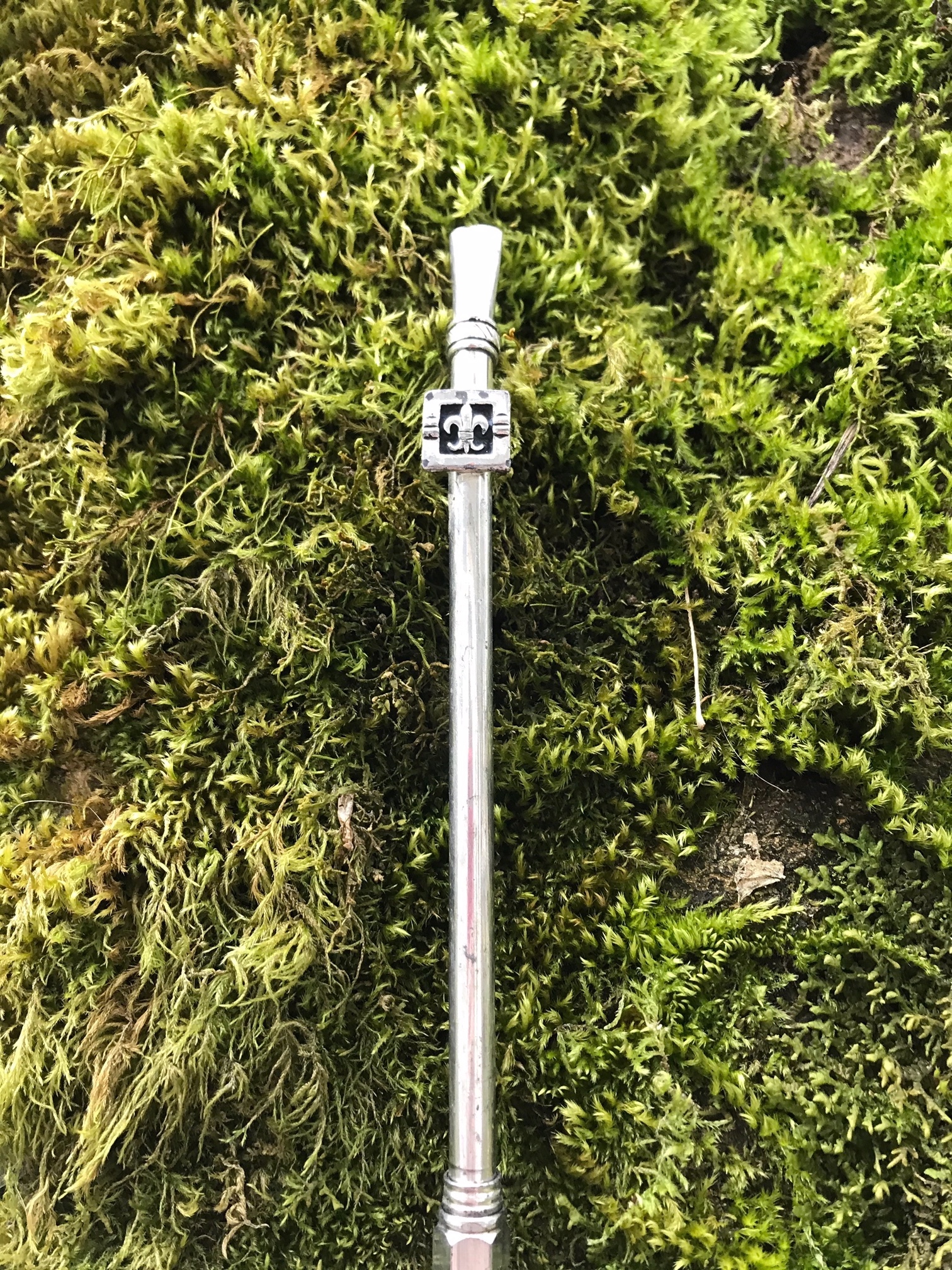
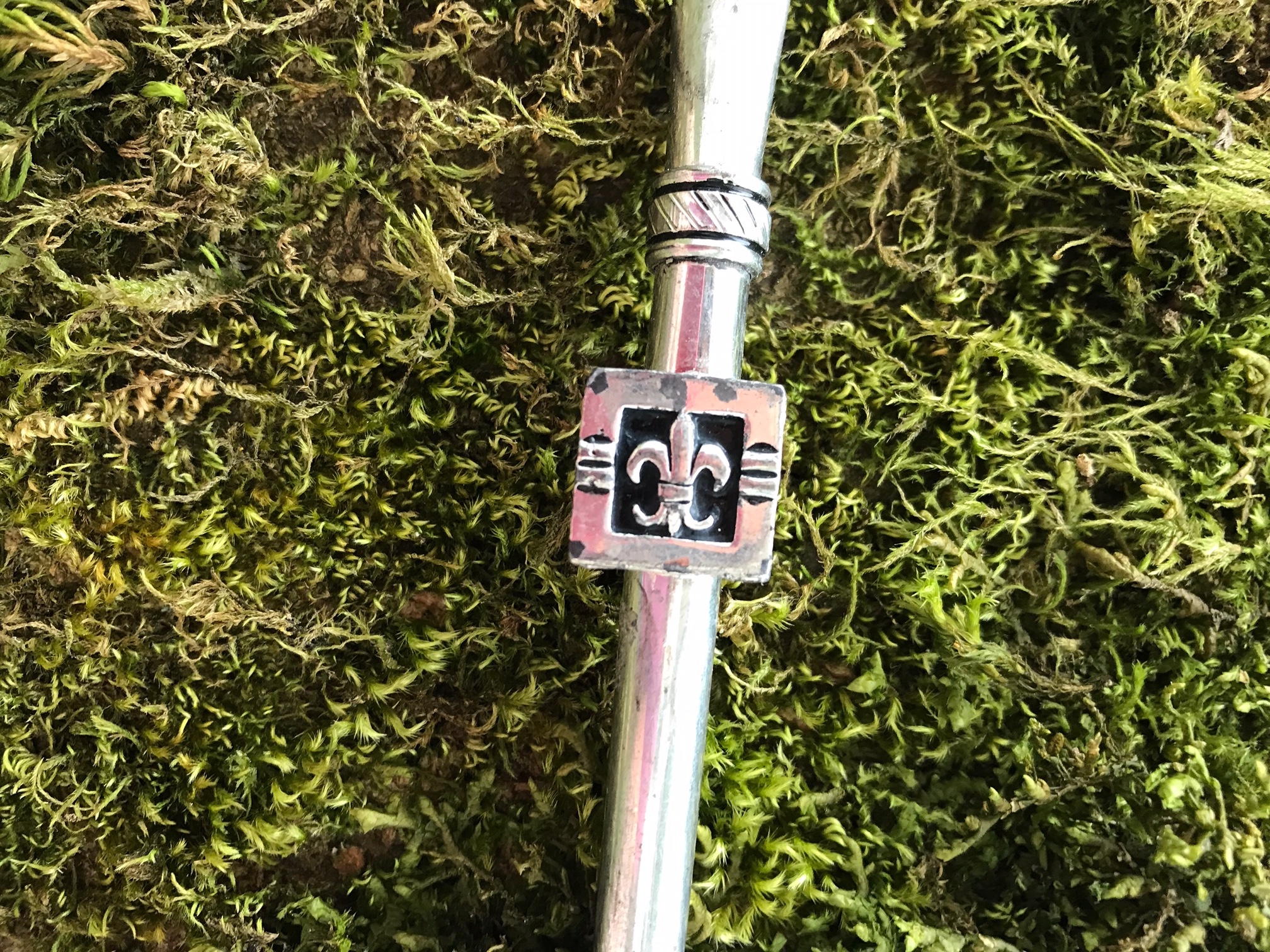

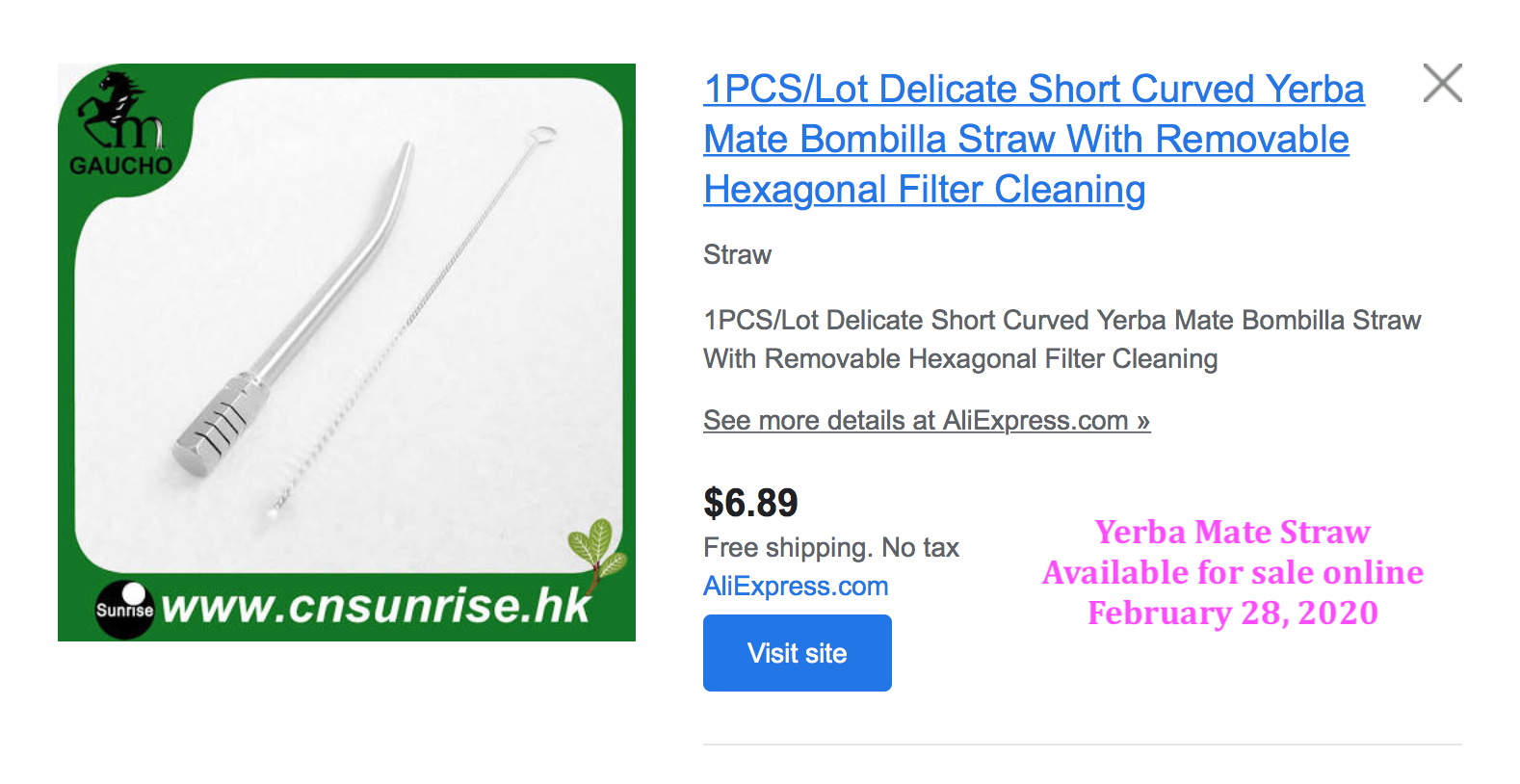
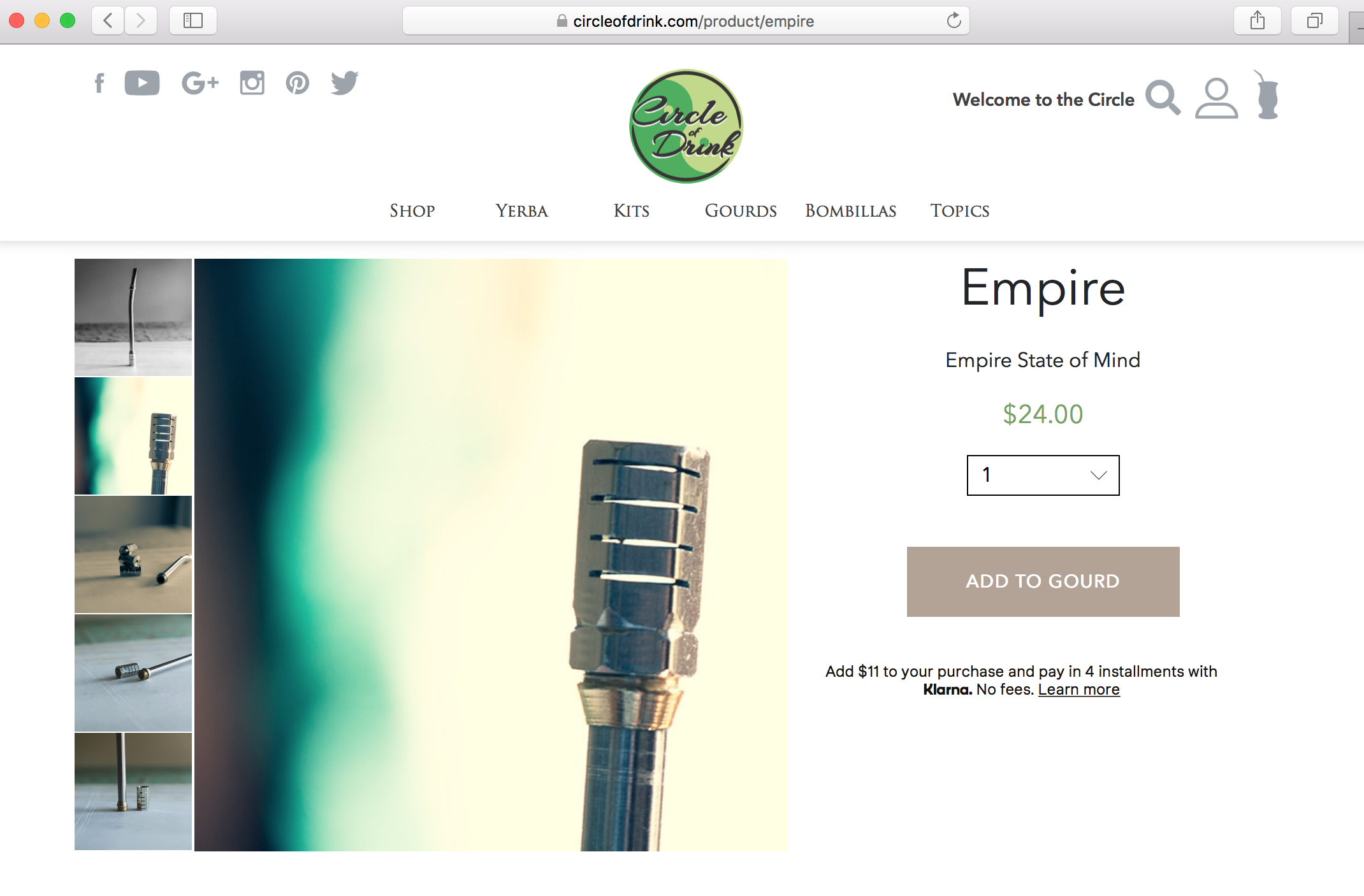
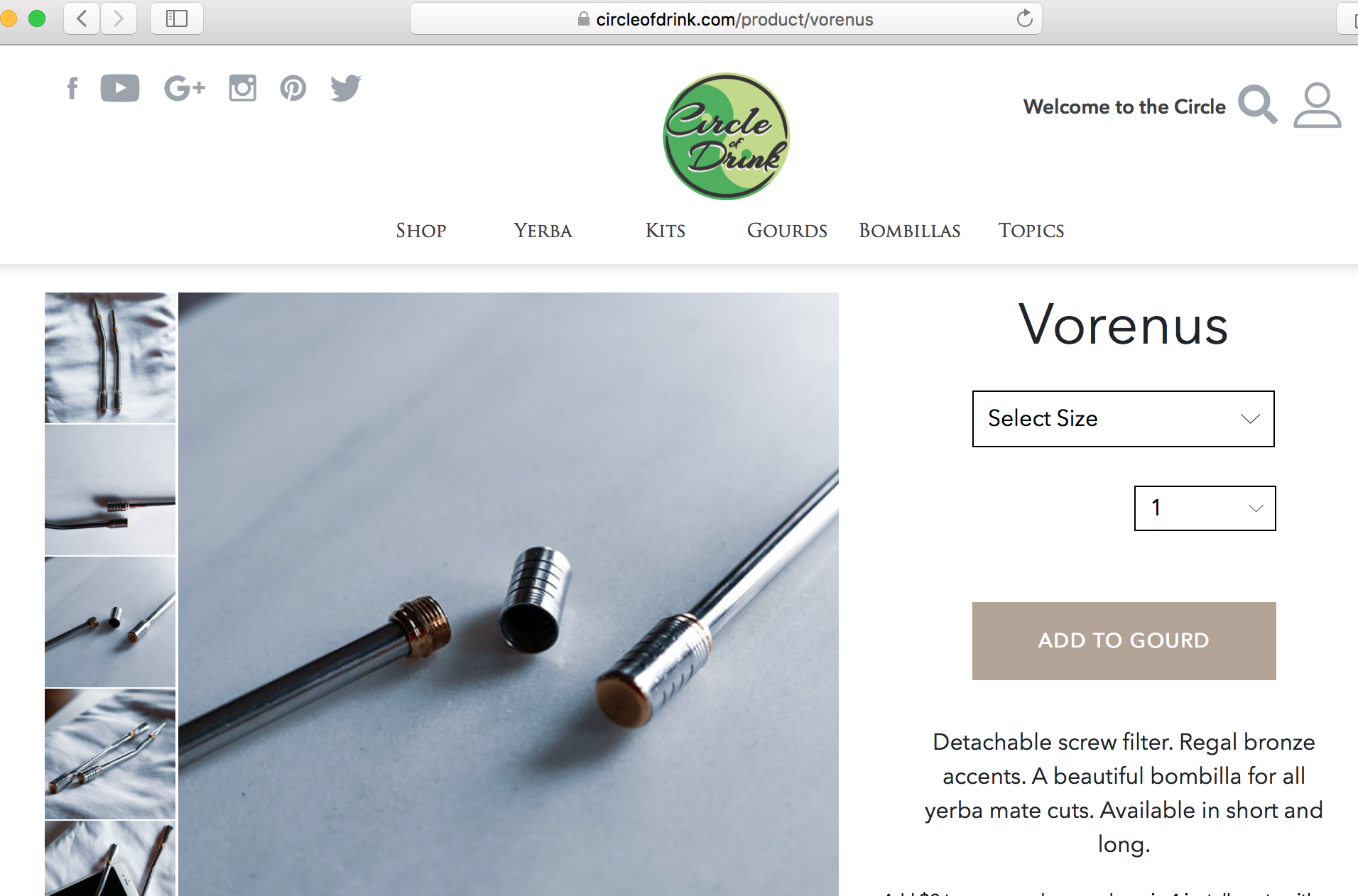
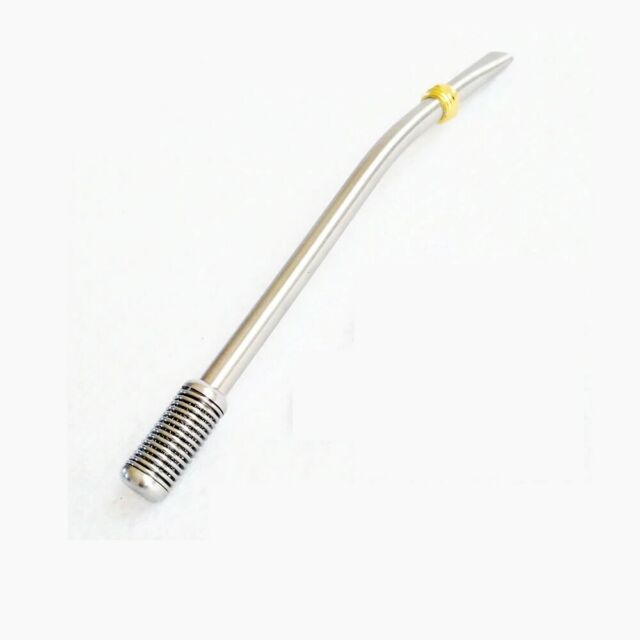

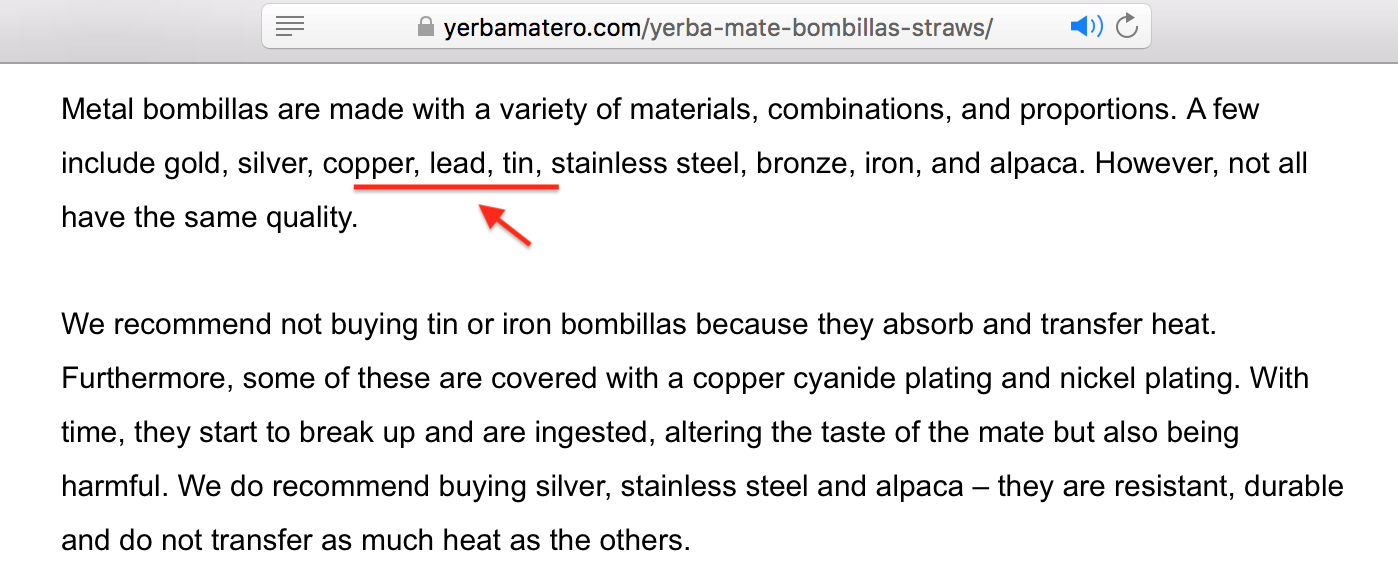
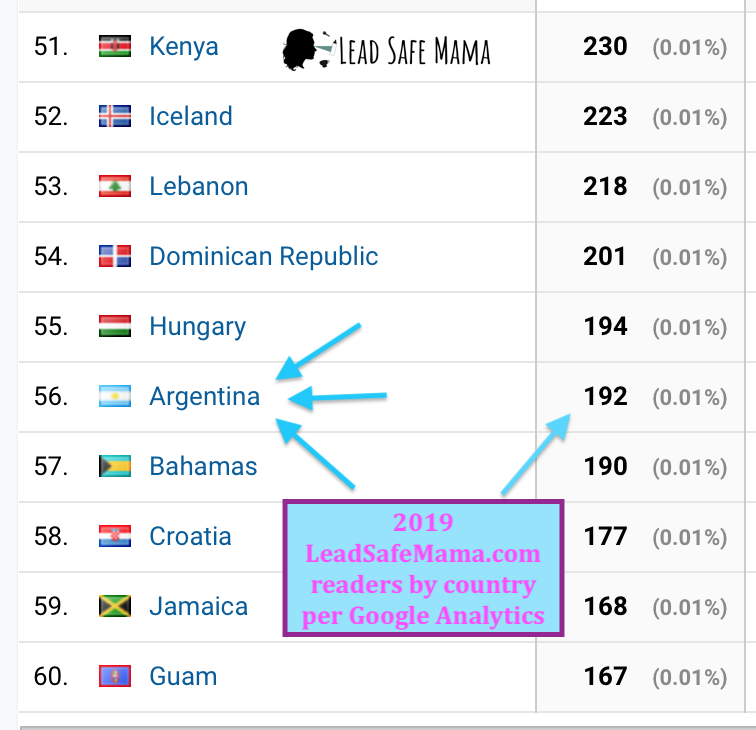
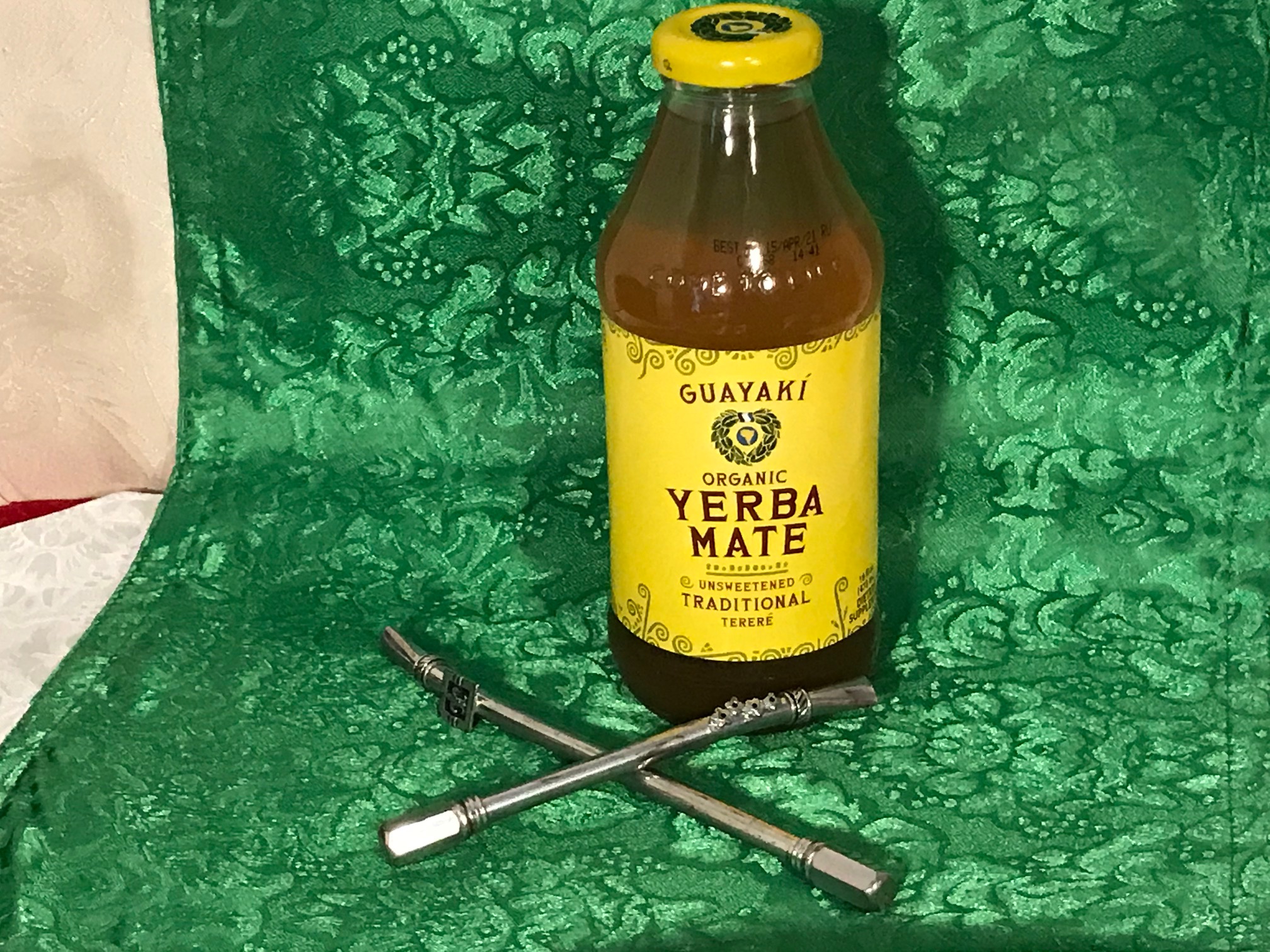





Great work Tamara. I’ve always been suspicious of these straws.
A response to a reader just now (I will post his question below): Hi D.N. in fact everyone on the planet (almost everyone) has some level of measurable Lead exposure from general pollution – but it is very very very low. One in three children in the United States has had a blood Lead level of 2.0 (micrograms per deciliter) or higher in their lifetime. Unicef also just recently published a report about the concern for widespread /global Lead exposure. Someone (an adult) who uses a Leaded object to drink out of on a regular basis might have a blood Lead level of (random educated guess from cases I have seen) 5 to 40 micrograms per deciliter. (possibly higher) The exposure is not just from drinking – it is also from holding the outside of the straw since there are very high Lead decorative components on the outside and it is certain that trace lead will wear on to the user’s hands from handling them. In that case – what else are they doing when they are drinking? Are they eating snacks? Like chips? or an apple? In that case there would be hand-to-mouth exposure from microscopic Lead wearing off on to the hands of the user and then from there directly on to the food – with no hand washing in between – because you are sitting at a table eating and drinking (in most cases.). Recent studies have shown that trace Lead exposure with “average current-decade adult humans” for a woman of childbearing age today – runs about 0.43 micrograms per deciliter. Even with levels those low (“normal” modern population levels) there is a definitive correlation between those lead levels and negative birth outcomes, infertility, low birthweight and other similar complications. Even trace Lead exposure is not worth the damage. Even if only 5% or 10% of these straws have Lead – it is not worth the risk. There needs to be awareness. The potential for impact is too great. I’m not sure that there can be a regulatory standard for these items (since so many appear to be handmade or hand decorated) but given they are a very popular food use item, I think they should be regulated (or there should be some sort of safety certification process for various brands so that at consumers have the OPTION of choosing a known safe product from a known brand). If you want to send me some of your straws for testing please do let me know I would be HAPPY to test more examples.
Here is his original question / comment: the article says she tested 2 straws, could she have gotten bad quality ones? I mean 90% of argentina would test positive for lead poisoning if this were the case in every or even most bombillas.Maybe try avoiding hand made ones and get the mass produced type. Those are generally 100% good ol’ stainless steel.
Looking for stainless steel straws. Are there safe ones? Thank you
Hello there! Thank you so much for this post. I only recently started drinking maté with bombilla and I quickly noticed a strange thing that lead me here. When I left bombilla, after drinking mate, in a mug for a week (I left my appartment and came days later), I noticed the (ceramic) mug was covered with a strange, golden color right under the bombilla. It apparently looked like something was leaking form the metal straw (and i could not wash it out of the ceramic).
I will immediatelly cease drinking maté with the bombilla. But I have a question – considering I have been a heavy drinker of maté with the metal straw for the past two months – is this enough for me to be concerned and get tested? Will the levels of metal in my body simply lower to normal levels over time? (I have not experienced any symptoms mentioned, appart from a strong heartbeat, which I however ascribe to a normal syptoms of matein consumption).
Thank you for your answer and for your research!
Hi Martin – it’s possible that the metal is either Antimony or Lead (and possibly even Cadmium). I would definitely consider talking to your doctor about a urine test if possible (even if just to get a baseline). Here’s more information on that: https://tamararubin.com/2020/05/i-heard-that-urine-and-hair-tests-for-heavy-metals-including-lead-were-not-real-or-useful-test-results-why-is-this/
Tamara
https://metamate.cc/product/premium-large-meta-mate-bomba/
https://metamate.cc/product/premium-bomba-simple/
https://yerbamatero.com/products/purinox-premium-bomba
https://mate-tea.co.uk/home/shop/yerba-mate-accessories/bombillas/purinox-premium-bomba/
https://www.ebay.com/itm/313436166491
These and other bombas/bombillas claimed to be made by the brand Purinox like to claim they’re lead free. Would you by any chance know if these bombillas from this manufactured have or not lead, antimonium and other harmful chemicals in it?
I don’t – sorry. But a lot of Lead-free product claims are false. I would be curious to find out.
Here’s how to send something in for testing if that is of interest:
https://tamararubin.com/2019/08/tamara-can-i-send-you-one-of-my-dishes-to-test-for-lead/
Tamara
I was gifted one of these from Chile. I’ve never used it and only it have it displayed in a curio cabinet. They commonly use them there in Chile and in Paraguay and a few other countries too. I know someone who uses this daily and shares with his son. I will definitely share this information. Thank you for all your hard work.
Thank you.
I studied abroad in Argentina and this makes me so sad because mate truly is such a special part of the culture. I was feeling nostalgic recently (it’s been 15 years since I was there) and was about to dust off the old bombilla and cup, but I’m glad I saw this before I did. Thanks for keeping us informed!
Hi! I was born and raised in Argentina. I don’t drink mate very often but most of the people in Argentina drink mate. And a lot of people drink mate in a daily basis and many times a day. I’ve never ever heard any concerns related to heavy metals in bombillas. Im just very surprised and curious about this. Drinking mate in Argentina is more than just a beverage. It’s part of the culture. And mate is supposed to be hot in a mate cup and you are supposed to drink it with a bombilla. Drinking cold mate is not the same. It’s not like people choose hot or cold. Cold is not as common or popular. Also that bottled mate from the picture is something that is more for tourists and foreign countries. It’s not something that you easily find in Argentina. Mate in a bottle is just not real mate. An alternative mate option without the mate cup and the bombilla would be “mate cocido”. This is mate in a tea bag style. So you brew it like a tea bag in your regular mug. So there is not mate cup or bombilla in drinking mate cocido. Now on the other hand, I’ve heard that tea bags usually contaminate your tea with tons of little plastic particles and other elements that are used to make the tea bags. So that would also be a problem here probably. Anyways, I just wanted to share this here and if I come across any study made about this in Spanish I will let you know Tamara. Thank you!
Thank you.
Hello! I was also concerned about this. I think the ones you got there are made of “Alpaca” (German silver) which is a common metal alloy used for artisanal products here. It’s made of copper, nickel and zinc. It’s only used in the most expensive bombillas and mate container’s decorations. It was super common in other kitchen items as a luxury product but forbidden for that use in the 70s. I still wonder how comes it’s still so popular for mate stuff.
I believe most common people today use industrial stainless steel bombillas (sometimes with bronze decorations).
Thank you for commenting… this is such a concerning ongoing issue.
T
Has anyone found any non heavy metal options? I guess cane or bamboo straws can get mould inside etc if you cant open them up to clean them.
Stainless steel ones? can it still contain high lead?